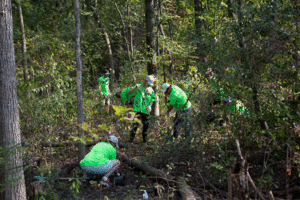
Jayda Noyes, Daily Herald
As September 26 is National Tree Day, a registered professional forester shared her expertise on a couple diseases that are affecting Prince Albert.
Marie-Paule Godin is also the operations manager of Tree Canada.
The non-profit charity created National Tree Day in 2011 to shed light on the importance of them.
It says trees reduce climate change, increase wildlife habitat and property values and even improve the overall mental health of a community.
But the city is seeing two threats to its tree quantity and health—Dutch Elm Disease (DED) and Emerald Ash Borer (EAB).
As Godin explains, DED is fatal in elm trees and is transported by bark beetles. Once the fungus has obtained itself, it kills the tree within three weeks.
She said the preventative measure is simple: keep the trees healthy.
“A healthy growing tree without any open wounds or without any dying branches, for example, will be much more ready to be in defence against the fungus…that’s attractive to beetles,” she said.
“If someone notices an elm tree that does have a branch that needs pruning or is thinking of pruning an elm tree, it should be done within the period of Oct. 1 to Mar. 31. That’s the time when beetles are less active, so they’re much less likely to come to the tree and bring the fungus with them,” noted Godin.
Once the tree is infected, it needs to be cut down and burned to prevent the disease from spreading.
On the other hand, even a healthy tree can be infected by EAB.
These metallic green insects are born in the crevices of ash trees and feed underneath their bark, which kills the tree within five or six years.
“That insect will be kind of like a hitchhiker and it’ll move along the wood with someone bringing firewood to a new campground,” for example.
The main preventative measure for this disease is not moving around ash wood, said Godin.
“These beetles are very, very small. They’re 10 millimetres long. You cannot see them, so sometimes people miss the symptoms or the signs and so they might unknowingly carry wood from another place, right, and bring the beetle with them,” she said.
Godin said having thriving trees in urban areas is crucial as they suck up the larger amounts of carbon dioxide.
For Tree Canada, which is based out of Ottawa, National Tree Day is for all Canadians to plant, maintain, and, of course, hug these precious plants together.




